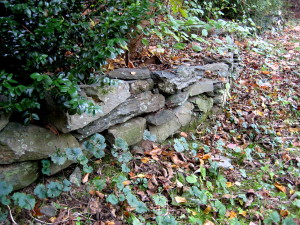
but they can be taken down…
one breath at a time…
-Photo by Jan Ketchel
When we are met with a smile, a nod, or a gentle welcoming gesture, we are programmed to soften, feel safe, relax our defenses and breathe freely. This innate archetypal bodily response to accepting supportive validating gestures may be inhibited by a history of traumatic interruptions that threatened safety; however, these bruises in human interactions can heal and, over time, allow us to relax into our innate capacity for love. We never lose our innate capacity to give and receive love.
The journey to freeing our innate capacity to receive the world, and express our full presence in it, is multilayered but largely physical. The bruises of trauma generate archetypal bodily defenses far more ancient than the archetypes of human interaction.
Failures in human interaction trigger an intrinsic self-driven defense system that functions independently of the behavior of others. If others cannot be trusted then the self alone becomes the source of safety.
The body turns on its own vigilant guard to protect the boundaries of the self. Sleep may be light or infrequent as a result of such vigilance. Muscles remain taut, shoulders tight, breathing shallow. All bodily systems, in fact, stay on heightened alert to possible danger, cautiously anticipating, planning, and avoiding potential trouble. This completely self-reliant defense system is ancient and highly useful in times of real danger. In our evolutionary history there was a time when it alone insured survival. Though less necessary in the modern world, it can be activated in a heartbeat should we be confronted with serious danger.
A major challenge in healing from trauma is turning off this ancient defense system when it has been activated unnecessarily. Here the human ability to reflect and choose a new action is particularly useful.
We can employ the mind, with its ability to observe and reason, to assess whether we are indeed really, in the here and now, in danger. The realization that we are not in danger in no way lessens the grip of this ancient defense that protects us through its control of our body, but it does give us a point of awareness, within our body, that alerts us to where the true work lies.
Reason alone has little to no impact upon the body’s defenses. We can, however, intentionally direct our awareness to our body and notice the state of our muscles and organs—heart, stomach, throat, etc.—as well as our breathing. We can, with awareness and intention, begin to direct our breath to various parts of our body that we notice to be clenched or shut down. We can, for instance, progressively soften and loosen our solar plexus or heart as we gently direct our breath into it. Similarly, we can begin to release tension in our shoulders and legs, or wherever we find tension in the body, by intending ourselves to do so. The body quite obediently listens and responds to our intentions.
As we consciously release the grip of vigilance in our body, our brain receives different messages from our body self that lies separate, beneath the head of reason. If our muscles and organs are relaxed, our brain concludes that we must be safe. The brain is then freed to stop its own vigilant story making that had given definition to the worrisome messages that it had been receiving from a tense, defended body.
Every time we release the tension of a clenched part of our body we change the message to the brain and the brain, in turn, changes its message back to the body. Over time, the brain can send the message that it’s okay to relax; we are safe. With safety comes receptivity, and our inherent archetypal ability to engage in deeper human connection opens. Smiles, nods, and warmth are able to be more safely received and expressed. We open.
This process of opening is indeed multifaceted and includes the journey of recapitulation, but it can be supported and enhanced, at any time—even in this moment—with one gentle directed breath.
Breathing away,
Chuck
